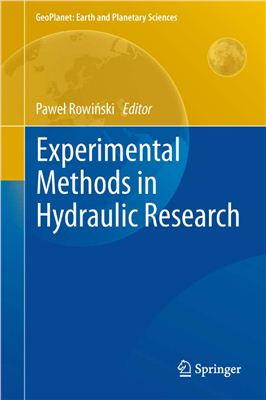Springer,2011. 342 p. ISBN:3642174744
It is clear that hydraulic research is developing beyond traditional civil engineering to satisfy increasing demands in natural hazards assessment and also environmental research. Our ability to describe processes in nature rests on the observation and experimental methods as well as on theoretical basics of various disciplines. Under such conditions experimental methods draw from various areas of human activities and research, i.e. from physics, biology, chemistry, aerospace research, oceanic research etc. The current volume, is the result of a meeting that took place during the 30th Inteational School of Hydraulics in Poland and presents both the state of the art and ongoing research projects in which experimental methods play a key role. Authors from numerous leading laboratories and from various countries guarantee a representative sample of different studies at the frontier of the field.
It is clear that hydraulic research is developing beyond traditional civil engineering to satisfy increasing demands in natural hazards assessment and also environmental research. Our ability to describe processes in nature rests on the observation and experimental methods as well as on theoretical basics of various disciplines. Under such conditions experimental methods draw from various areas of human activities and research, i.e. from physics, biology, chemistry, aerospace research, oceanic research etc. The current volume, is the result of a meeting that took place during the 30th Inteational School of Hydraulics in Poland and presents both the state of the art and ongoing research projects in which experimental methods play a key role. Authors from numerous leading laboratories and from various countries guarantee a representative sample of different studies at the frontier of the field.

